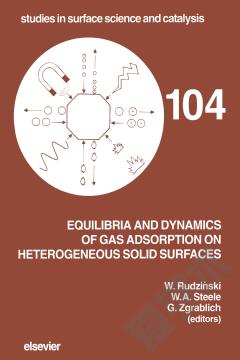Equilibria and Dynamics of Gas Adsorption on Heterogeneous Solid Surfaces
The fact that the surfaces of real solids are geometrically distorted and chemically non-uniform has long been realized by the scientists investigating various phenomena occurring on solid surfaces. Even in the case when diffraction experiments show a well-organized bulk solid structure, the surface atoms or molecules will usually exhibit a much smaller degree of surface organization. In addition to the results obtained from electron diffraction, this can be seen in the impressive images obtained from STM and AFM microscopies. This geometric and chemical disorder is the source of the energetic heterogeneity for molecules adsorbing on real solid surfaces. Hundreds of papers have been published showing that this heterogeneity is a major factor in determining the behaviour of real adsorption systems.Studies of adsorption on energetically heterogeneous surfaces have proceeded along three somewhat separate paths, with only minor coupling of ideas. One was the study of adsorption equilibria on heterogeneous solid surfaces. The second path was the study of time evolution of adsorption processes such as surface diffusion or adsorption-desorption kinetics on heterogeneous surfaces, and the third was the study of adsorption in porous solids, or more generally, adsorption in systems with limited dimensions. The present monograph is a first attempt to provide a synthesis of the ways that surface geometric and energetic heterogeneities affect both the equilibria and the time evolution of adsorption on real solids. The book contains 17 chapters written by a team of internationally recognized specialists, some of whom have already published books on adsorption.
{{comment.content}}








 京公网安备 11010802027623号
京公网安备 11010802027623号